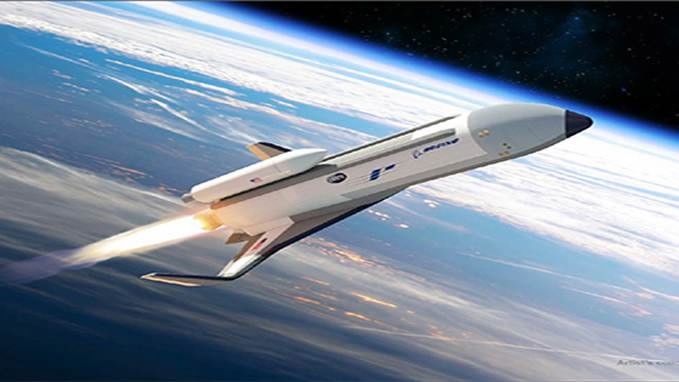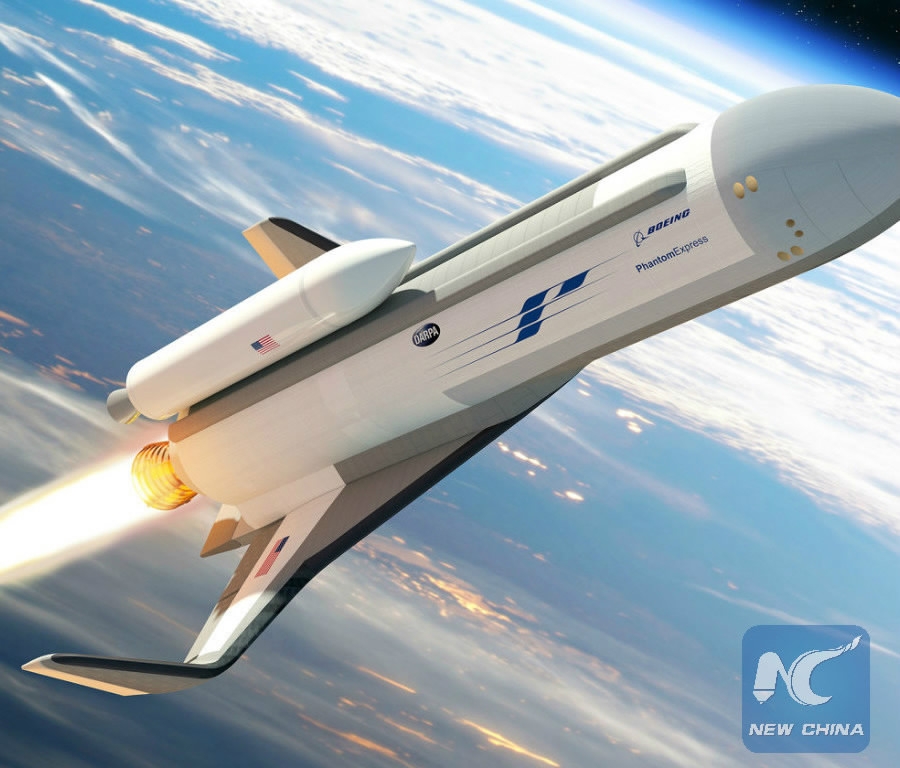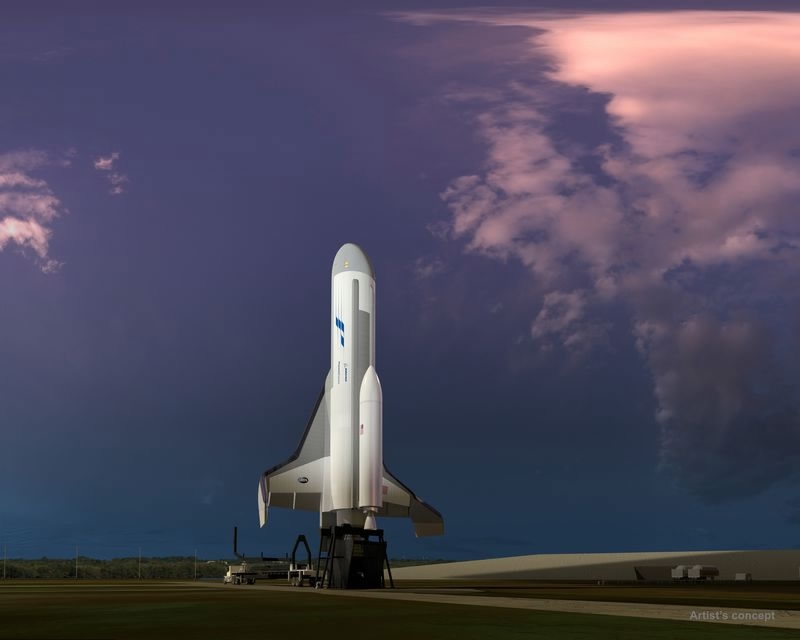US to build hypersonic space plane that can fly 10 times in 10 days

The US Defense Advanced Research Projects Agency (DARPA) announced Wednesday it has selected the Boeing company to design, build, and test the first of an entirely new class of hypersonic aircraft that would be able to fly 10 times in 10 days.
The unmanned vehicle, known as Experimental Spaceplane (XS-1), roughly the size of a business jet, would take off vertically like a rocket and fly at hypersonic speeds. But unlike the US military's X-37B space plane that launches with an external booster, it would be powered solely by self-contained cryogenic propellants, the DARPA said in a statement.
Upon reaching a high suborbital altitude, the space plane would release an expendable upper portion that is able to deploy a 3,000-pound (1,360-kilogram) satellite to polar orbit. The reusable first portion would then bank and return to Earth, landing horizontally like an aircraft, and be prepared for the next flight, potentially within hours.

Phantom Express is envisioned as a highly autonomous experimental spaceplane, shown preparing to launch its expendable second stage on the top of the vehicle in this artist's concept. The Defense Advanced Research Projects Agency is collaborating with Boeing to fund development of the Experimental Spaceplane (XS-1) program. /Xinhua Photo
Currently, months or years of preparation is needed to send a single satellite into orbit.
According to the DARPA, building XS-1 will need significant advances in both technical capabilities and ground operations, but "would revolutionize the nation's ability to recover from a catastrophic loss of military or commercial satellites, upon which the Nation today is critically dependent."
"The XS-1 would be neither a traditional airplane nor a conventional launch vehicle but rather a combination of the two, with the goal of lowering launch costs by a factor of ten and replacing today's frustratingly long wait time with launch on demand," said Jess Sponable, DARPA program manager.
Boeing's Phantom Express XS-1 design beat out concepts proposed by Masten Space Systems and Northrop Grumman.

A rendering of the Phantom Express preparing for launch. /Boeing Photo
"Phantom Express is designed to disrupt and transform the satellite launch process as we know it today, creating a new, on-demand space-launch capability that can be achieved more affordably and with less risk," said Darryl Davis, president of Boeing Phantom Works.
Next, Boeing will build and test the technology demonstration vehicle, culminating with 10 test fires of the vehicle's engine on the ground in 10 days to demonstrate propulsion readiness for flight tests in 2019.
Then, there would be 12 to 15 flight tests, currently scheduled for 2020. After these flights are completed, the DARPA would launch the XS-1 10 times over 10 consecutive days, at first without payloads and at speeds as fast as Mach 5, or five times the speed of sound.
Subsequent flights are planned to fly as fast as Mach 10, and deliver a demonstration payload between 900 pounds and 3,000 pounds (400 to 1,360 kilograms) into low Earth orbit.
If the program is successful, the agency predicted that the XS-1 could operate with costs under five million US dollars per launch, including the cost of an expendable upper stage, which accounts for "a small fraction of the cost of launch systems the US military currently uses for similarly sized payloads."
(Source: Xinhua)
